Ceramic Coating for Cars: Everything You Need to Know

Buying a car isn’t exactly cheap and you likely want to make that investment last as long as possible. While maintaining what’s underneath the hood should be your main priority so that your car lasts hundreds of thousands of miles, you’ll also want to make sure the exterior of your car looks great for years to come. In the past, that involved regularly washing your car and doing a coat of wax from time to time, but car detailing supplies have come a long way. Now, you can be completely overwhelmed with all the available options for polishing kits, waxes, clay bars, and other detailing supplies that are designed to keep that new car shine.
In recent years, ceramic coating has become the hottest trend in car care. Take your car to a local professional detailer who does ceramic coating and you might be surprised by just how much it costs. A quality ceramic coat for your car, using products from a reputable brand such as Ceramic Pro, could cost close to $1,000 (or more!) depending on how much additional work has to be done to get your car ready for ceramic coating.
You’re probably wondering, is ceramic coating really worth the money? Does it truly offer significant benefits over traditional wax or other sealants? We’re here to help you answer those questions and more, but it may ultimately be your decision on whether or not ceramic coating is worth it.
Table of contents
- What is ceramic coating for cars?
- Types of ceramic coatings:
- What are the benefits of ceramic coating?
- What are hybrid ceramic coating products?
- How long does ceramic coating last?
- How much does ceramic coating cost?
- Do I need a professional to apply ceramic coating?
- How to apply ceramic coating:
- How to remove ceramic coating:
What is ceramic coating for cars?
To help better explain that, we turn to Ceramic Pro, one of the most popular brands used by professional detailers: “Primarily composed of silica and titanium dioxide, these two substances together form a covalent bond that is hydrophobic in nature and forms a nano-ceramic shield above the vehicle’s clear coat.” Ceramic coating is typically applied as a liquid polymer and once it cures, it forms a protective layer on your car’s surface.
There are several different types of ceramic coatings that are now available, but if you’re looking at a professional-grade product, it’s likely being billed as nano ceramic coating. Nano coatings are highly-concentrated formulas that utilize nano technology to fill minor cracks or imperfections, creating a flat and hard layer of protection.
If you’ve researched various types of ceramic coatings, you may have heard of “9H ceramic coating,” which is a type of nano ceramic coating. According to Ceramic Pro, 9H is the highest on the pencil scale of hardness and it’s basically as hard as a solid quartz crystal. The pencil scale of hardness is used for ceramic coating to signify how “hard” the coating is once it’s cured. The scale ranges from 0 to 9, and the “H” indicates the hardness of that grade. That means authentic 9H ceramic coatings will not be damaged from a 9H pencil.
Now things get a bit confusing if you’re shopping for off-the-shelf ceramic coatings, or products that you can apply yourself. While the market does offer some products that claim to be 9H ceramic coatings, there are more on the market that are hybrid products, which we’ll explain in detail below.
Types of ceramic coatings:
| Type | Price Range |
| DIY Spray Coatings & Waxes | Under $50 |
| Pros: Easy to apply, affordable, hydrophobic, good protection | |
| Cons: Most of these products aren't actually ceramic coating, but offers similar characteristics |
| DIY Ceramic Coating Kits | $50 to $150 |
| Pros: Actual ceramic coating, creates a protective barrier on your car's finish, better protection than spray coatings and waxes | |
| Cons: Needs a lot of prep work, experience, and knowledge—you need to know what you're doing! |
| Professional Ceramic Coating | $250 and up |
| Pros: Professional-grade product, extremely durable, can last a long time, keeps your finish looking new | |
| Cons: Price varies depending on your vehicle and where you live, are you really getting what you pay for? |
What are the benefits of ceramic coating?
Photo credit: itman__47 / Shutterstock.com
In a way, you can look at ceramic coating as a much more premium alternative to wax, but it’s more than just that. The protective layer it forms is extremely hydrophobic, helping keep water off your car’s surface. It also serves as a protective barrier from the sun’s harmful UV rays, oxidation, and other contaminants that may stick to your car’s clear coat or paint.
Nano ceramic coatings also have the benefit of offering some level of scratch protection. Since it’s forming a hard shell on the surface of your vehicle, the probability of getting light scratches does decrease.
In summary, ceramic coating creates a barrier on your vehicle, reducing the chances that it’s damaged by the environment or even accidental scratches. That means your car’s finish stays looking new and with less maintenance.
What are hybrid ceramic coating products?
With the rising popularity of professional ceramic coating services, it is little surprise major manufacturers of car detailing supplies have begun to offer their own line of ceramic products. But many of these are branded as “hybrid ceramic coating” and you’re probably wondering, what’s the difference? To explain, we turn to Meguiar’s, one of the leaders in the industry, and here’s what it has to say about its Hybrid Ceramic Spray Wax:
“While it’s based off ceramic technology, it isn’t actually a ceramic coating,” says Meguiar’s on its website. “It essentially combines polymer molecules with a SiO2 core making it a hybrid between a polymer sealant and a ceramic coating. The result is a spray protectant that embodies some of the desired characteristics of a ceramic coating like extended durability, extreme water beading and easier wipe down in a product that’s extremely easy to use and is much less expensive.”
In other words, hybrid ceramic products like Meguiar’s Hybrid Ceramic Spray Wax, is an affordable alternative to professional ceramic coating. Although it isn’t actually ceramic coating, it does offer some of the benefits at a much more affordable price. These types of products, which are also available from several other manufacturers, are ideal for car owners who regularly wash and detail their vehicle. They won’t offer the exact same protection as professional ceramic coating, but with regular maintenance they’ll do a great job at maintaining and protecting your car’s finish. This is especially true if you have a garage for your vehicle.
How long does ceramic coating last?
Professional ceramic coatings will also vary, based on the service offered by the detailer. Basic protection will typically last up to two years, while 9H coating can offer up to five years of protection. Some companies offer lifetime protection on their ceramic coatings, by adding multiple coats of durable 9H product to your vehicle. Again, this all comes down to how much you’re willing to pay and how often you’re caring for your car with proper washes.
How much does ceramic coating cost?
There are also wax applications that have been infused with SiO2 and ceramic properties that are a bit more expensive, typically under $50. SiO2 is silicone dioxide, and when infused in a polymer matrix, it delivers some of the characteristics you’d expect from ceramic coating. Again, some of these hybrid ceramic waxes aren’t true ceramic coatings, but offer better protection and durability than traditional wax.
Things get a bit interesting if you’re shopping online for 9H ceramic coating. We recommend sticking to reputable brands, such as Adam’s Polishes, which offers a kit for around $85. Avoid no-name brands and if the price seems like it’s too good to be true, it probably is. Many of the more affordable products likely won’t live up to their claims, especially when it comes to durability and how long the coating lasts.
Now, if you are willing to pay the money to get ceramic coating done by a professional, it won’t be cheap. There are several different factors that professional detailers consider when quoting a job, including the size of the vehicle, the condition of the vehicle, the color of the vehicle, and the type of protection you want. As a result, prices can range from hundreds to thousands of dollars. If you choose to go this route, we recommend getting full details on exactly what you’re paying for. Are you getting a professional grade coating? How many coats are they applying? Are there any guarantees on how long it will last? How much maintenance is involved for aftercare? If you have multiple detailers near you that offer ceramic coating, it’s always a good idea to get quotes from each one.
| Price Range | What You Get | Recommendations |
| Under $25 | DIY bottle of hybrid ceramic spray coating | Check Price |
| $25 to $50 | DIY bottle of ceramic wax | Check Price |
| $50 to $150 | DIY ceramic coating kits | Check Price |
| $250 to $1,000 | Professional grade coating, with some detailers offering 9H ceramic coating | Check local detailers |
| $1,000 and up | Multiple coats of 9H ceramic coating with some companies offering lifetime warranty | Check local detailers |
Do I need a professional to apply ceramic coating?
Photo credit: Aleksandr Kondratov / Shutterstock.com
This largely depends on how much you’re willing to spend on your car. While there are some DIY options out there, always keep in mind that these are typically cheaper and of lower quality than the product a professional uses. There’s a reason why you can’t purchase some of the more premium products that professional detailers use.
Another factor to consider is how experienced you are when it comes to detailing your car. Do you know what flaws to look for prior to applying ceramic coating? Are you capable of correcting your paint? You’ll want a good foundation to work with, since ceramic coating is creating a barrier on your car’s surface. Flaws underneath the coating will still appear if they aren’t first properly corrected.
If you’re happy with the level of protection spray coatings offer, those products are designed for easy application. Ceramic coating wax can also be done from your driveway or garage, just follow the manufacturer’s instructions.
How to apply ceramic coating:
- Properly hand wash your vehicle, ideally using the two-bucket method.
- After rinsing off your vehicle, thoroughly go through its surface (while it’s still wet) with a clay bar to remove all contaminants from the surface.
- Some ceramic coating kits will come with iron remover, which you can spray to ensure any remaining particles are off your car’s surface.
- Completely dry your car bumper to bumper, ensuring all crevices are also free of water.
- Use a quality polishing kit to remove any light imperfections on your car’s surface. Ideally you’ll want to use a buffer for this process. Remember, this is the polishing step, don’t use wax or any sort of sealant.
- If your car has swirl marks or scratches, you’ll want to do proper paint correction with multiple stages of polishing. This is where paying a professional comes in handy, because you really want to ensure your paint is as flawless as possible before applying the ceramic coating.
- Thoroughly inspect your vehicle to ensure all polishing residue has been removed from the surface.
- Follow the instructions for your specific ceramic coating kit. You’ll want to work in small areas when applying the coating onto your vehicle. Have plenty of towels nearby and after you’re done with each section, use an LED light to make sure no residue is left behind.
- Once you’re finished, you’ll want the coating to cure. Each product will have their own recommendations, but generally you’ll want to keep your car parked indoors for a day or two. Avoid water contact on the surface of your car for a few days.
- Always wear gloves!
How to remove ceramic coating:
That’s because ceramic coating is an actual hard layer of protection added onto your car’s surface. It’s designed to be extremely durable against the environment, which is why it’s difficult to remove.
If you purchased ceramic coating from a reputable brand, the company should have recommendations on how to remove its product. There are certain chemicals on the market that can be used to remove ceramic coatings, but as you can imagine, they could potentially damage your car’s clear coat as well.
Another solution is to properly polish your vehicle to remove the ceramic coating, but this requires quite a bit of elbow grease, time, and knowledge. You’ll need to be experienced with polishes and know what to look for during this process to avoid damaging your clear coat.
To give you an idea on how to remove ceramic coating, we once again refer to Ceramic Pro. The company recommends that you sand the coated area using 1000 grit or stronger sandpaper past the Ceramic Pro coating layers and into the clear coat, until the clear coat is an even milky appearance. This is, of course, a recommendation for Ceramic Pro’s 9H ceramic coating, and this will differ depending on the product you used. At the end of the day however, it’s best to seek a professional if you want to remove ceramic coating from your car.
We are committed to finding, researching, and recommending the best products. We earn commissions from purchases you make using the retail links in our product reviews. Learn more about how this works.
Photo credit: REDPIXEL.PL / Shutterstock.com

Jason Siu began his career in automotive journalism in 2003 with Modified Magazine, a property previously held by VerticalScope. As the West Coast Editor, he played a pivotal role while also extending his expertise to Modified Luxury & Exotics and Modified Mustangs. Beyond his editorial work, Jason authored two notable Cartech books. His tenure at AutoGuide.com saw him immersed in the daily news cycle, yet his passion for hands-on evaluation led him to focus on testing and product reviews, offering well-rounded recommendations to AutoGuide readers. Currently, as the Content Director for VerticalScope, Jason spearheads the content strategy for an array of online publications, a role that has him at the helm of ensuring quality and consistency across the board.
More by Jason Siu



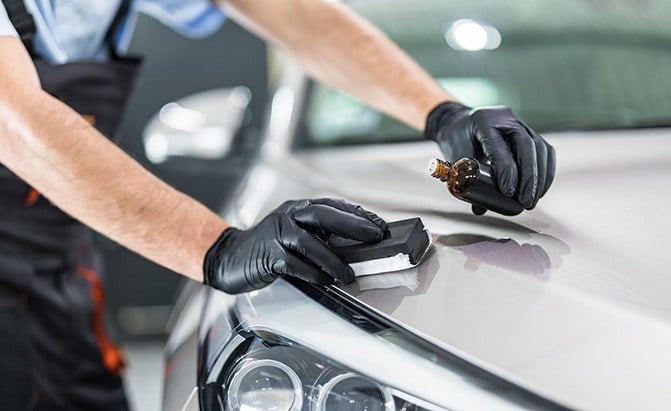












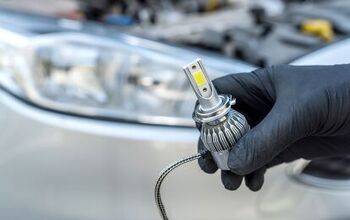



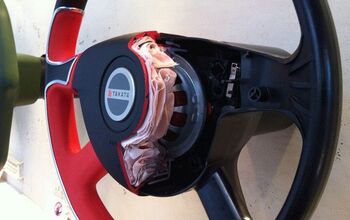
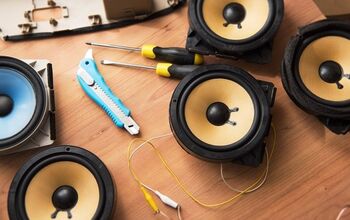







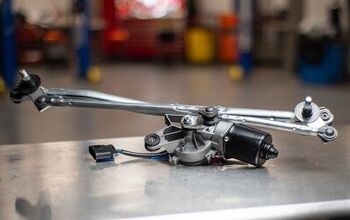

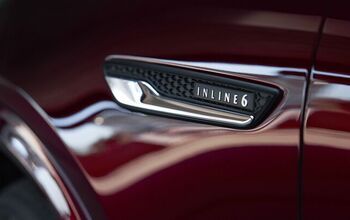


Comments
Join the conversation
A shop applied a coat of ceramic Pro on my new vehicle. It looks great but they fell short on the glass and tires. So They are now offering to apply a second coat on my paint to compensate me in three weeks at no charge. I have no idea if topcoat was used or if applying a second coat would be of benefit or potential detriment?? Recommendations appreciated.
im very interested in learning more about ceramic coating